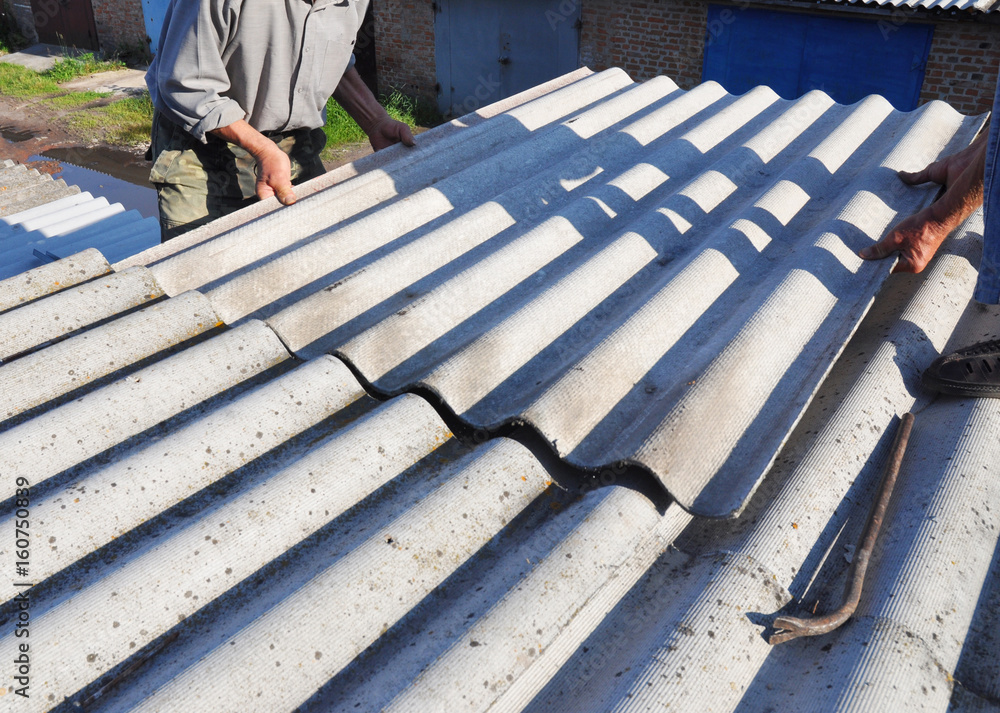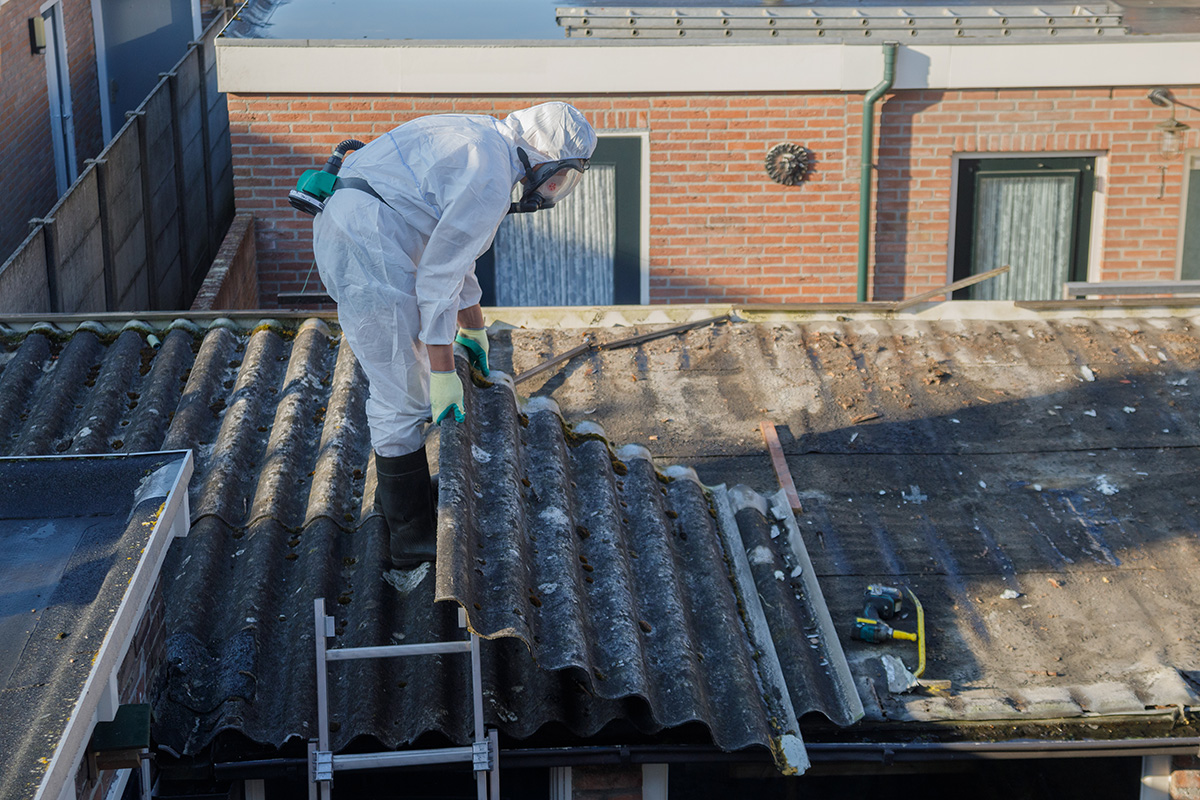Asbestos Removal Project Completion Protocols How To Get Your Roof Replaced For Under 1000
Monitoring And Maintaining Safety Standards Risks Associated With Asbestos Roofs
Asbestos risk assessment is a important process in guaranteeing the security and health of individuals potentially uncovered to asbestos. Asbestos, a naturally occurring mineral fiber, was extensively utilized in development and insulation materials due to its fire-resistant properties and power. However, its inhalation can lead to severe health points, including lung most cancers and asbestosis.
The key element of an asbestos risk assessment is figuring out places the place asbestos might be current. Common areas include older buildings, colleges, and industrial facilities, lots of which had been constructed before the widespread regulations on asbestos use got here into effect. Identifying materials that will contain asbestos is important to find out the level of risk.
When conducting an asbestos risk assessment, it is important to understand the kinds of materials that sometimes comprise asbestos. These can include insulation, roofing shingles, ground tiles, and textured paint. All of these materials pose significant risks if they're friable, which means they are often easily crumbled or pulverized into mud.
Licensed Asbestos Removal Specialists In Sydney Diy Awareness For Asbestos Removal

Visual inspections are a vital first step in assessing the potential risk of asbestos exposure. Trained professionals search for seen signs of asbestos-containing materials. However, visible inspections alone are sometimes insufficient. Air monitoring and sampling could also be needed to verify the presence of asbestos fibers.
After figuring out potential asbestos-containing materials, the subsequent step includes evaluating the situation of those materials. If they are intact and undisturbed, the danger could additionally be decrease. However, broken materials requiring repair or removal pose the next risk and must be handled promptly.
An correct risk assessment will also consider the frequency and duration of exposure. Individuals who work in or close to areas with potential asbestos risk should be significantly vigilant. Understanding how usually and for the way long exposure might occur is important in evaluating the extent of the risk.
Impact Of Weather On Asbestos Roof Removal Removal And Disposal Of Asbestos
Regulatory standards also play a pivotal role in the analysis process. Various companies, such because the Environmental Protection Agency (EPA) and the Occupational Safety and Health Administration (OSHA), present guidelines that help form risk assessments. Adhering to these standards is vital for safeguarding human health.
If asbestos is detected and deemed at risk, a management plan might be required. This plan could involve encapsulation, which seals the asbestos material and prevents fibers from turning into airborne, or full removal, which tends to be a more costly and disruptive option. The alternative depends on the kind of material, its condition, and the chance of disturbance.
Training and educating these involved in the risk assessment process is also key. Workers ought to be aware of the dangers associated with asbestos exposure and trained to identify potential risks. Proper training ensures that safety protocols are adopted, decreasing the likelihood of exposure.
Furthermore, periodic re-assessment is critical in environments where asbestos is present. As conditions change over time, materials may degrade, affecting the level of risk. Regular monitoring helps to take care of a secure environment and allows for timely intervention when wanted.
Asbestos Roof Removal Health Risks Find A Licensed Asbestos Removalist
Involving stakeholders, together with property house owners, employers, and staff, is crucial for effective risk management. A collaborative strategy to understanding and mitigating asbestos risk fosters a culture of safety and awareness. Open communication can significantly scale back the chances of exposure and health issues arising from asbestos.

Overall, the importance of an asbestos risk assessment cannot be overstated - Asbestos Roof Encapsulation Alternatives. It not only protects particular person health but also contributes to broader public health safety. As awareness of the hazards associated with asbestos continues to develop, compliance with risk assessment best practices becomes much more critical
How To Prepare For Asbestos Roof Removal Best & Cheap Removal Services Available
Strategies that emphasize prevention and mitigation of asbestos exposure can lead to safer work and dwelling environments. Efforts to educate and inform the basic public about the risks associated with asbestos contribute considerably to a more health-conscious society.
In conclusion, the process of conducting an asbestos risk assessment is integral for safeguarding individuals from potential harm. Understanding the presence and situation of asbestos-containing materials is paramount in assessing risks. Continuous monitoring and stakeholder engagement enhance the effectiveness of management strategies. As regulatory frameworks evolve and awareness grows, proactive measures in opposition to asbestos-related risks will help in fostering safer environments for all.
Common Challenges In Asbestos Roof Removal Asbestos Roof Maintenance Services
- Conduct a thorough inspection of buildings constructed before the Nineteen Eighties, as these are most likely to comprise asbestos-containing materials (ACMs).
- Utilize certified asbestos professionals to gather samples and carry out laboratory testing for correct identification of asbestos presence.
- Assess the situation of identified ACMs, noting any damage, friability, or wear that will enhance the risk of asbestos fiber release into the air.
Asbestos Removal Certification In Sydney Safe, Reliable And Experienced Removal Services
- Create an in depth stock of all asbestos materials inside a property, together with their places, types, and portions for future reference throughout management.
- Implement a management plan outlining procedures for controlling asbestos risks, together with common monitoring and maintenance of ACMs.
- Educate workers and tenants in regards to the potential dangers of asbestos exposure and the importance of adhering to safety protocols on-site.
Asbestos Roof Removal Community Resources In Sydney Best & Cheap Removal Services Available
- Ensure compliance with native and federal regulations relating to asbestos handling, removal, and disposal to mitigate legal and health liabilities.
- Evaluate the encompassing environment and activities that could disturb ACMs, such as renovations or demolitions, and develop particular safety measures.
- Plan for emergency response procedures in case of unintentional disturbance of asbestos materials, making certain that every one personnel are trained in instant containment and reporting protocols.
Asbestos Removal Equipment Used In Sydney Removal & Replacement Of Roof Asbestos
- Conduct common evaluations and updates of the danger assessment to accommodate any changes in building occupancy, use, his response or situation of asbestos over at this website materials.
What is asbestos risk assessment?undefinedAsbestos risk assessment is a systematic evaluation process to identify the presence of asbestos-containing materials in a building, assess the chance they pose to health, and determine appropriate actions to administer or remediate any potential hazards.
Why is an asbestos risk assessment necessary?undefinedAn asbestos risk assessment is essential to guard occupants and staff from potential exposure to asbestos fibers, which can result in serious health conditions, together with lung cancer and asbestosis. It helps guarantee compliance with safety regulations.
How is an asbestos risk assessment conducted?undefinedThe assessment includes inspecting the property for materials that may comprise asbestos, sampling these materials for laboratory analysis, and evaluating the diploma of risk primarily based on the condition and placement of the asbestos.
Who should perform an asbestos risk assessment?undefinedA certified professional, typically an accredited asbestos inspector or an industrial hygienist, ought to perform the assessment. Their experience ensures accurate identification and risk analysis.
Public Health Implications Of Asbestos Exposure Costs Associated With Removal And Replacement
What are the signs that an asbestos risk assessment is needed?undefinedSigns embrace the presence of building materials installed before the Eighties, visible injury to materials like insulation or roofing, or when renovations or demolition are planned in older buildings.
How often ought to asbestos risk assessments be updated?undefinedRisk assessments must be reviewed and updated each three to 5 years or after any vital renovation, damage, or disturbance of asbestos-containing materials. Frequent updates ensure ongoing safety.
What ought to I do if my property has recognized asbestos?undefinedIf asbestos is identified, it is important to administer it appropriately. Options include encapsulation (sealing) or removal by licensed professionals, depending on the fabric's situation and location.
Commercial Asbestos Roof Removal Services Residential Asbestos Removal Services
What is the price of an asbestos risk assessment?undefinedThe cost can differ primarily based on factors such because the property's size, the complexity of the assessment, and local charges, nevertheless it typically ranges from a couple of hundred to some thousand dollars. - Asbestos Roof Removal Timelines And Schedules
Are there legal requirements for asbestos risk assessments?undefinedYes, many jurisdictions have regulations mandating asbestos risk assessments in business buildings and through renovations or demolition activities, to guard public health and safety.
Importance Of Professional Asbestos Removal Removal And Disposal Of Asbestos
What are the potential consequences of not conducting an asbestos risk assessment?undefinedFailing to conduct an asbestos risk assessment can result in legal penalties, exposure of occupants to dangerous asbestos fibers, and potentially costly remediation after an sudden launch of asbestos.